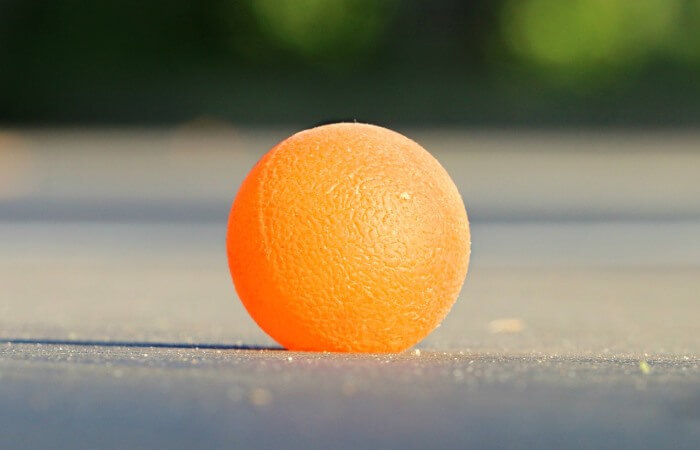Copper hydroxide (II), characteristics, properties and production, chemical reactions

Copper hydroxide (II), characteristics, properties and production, and chemical reactions.
Copper hydroxide (II) is an inorganic substance and has a chemical formula of Cu(OH)2.
Brief description of the hydroxide of copper (II)
Physical properties of copper hydroxide (II)
Obtaining of copper hydroxide (II)
Chemical properties of copper hydroxide (II)
Chemical reactions of copper hydroxide (II)
The application and use of copper hydroxide (II)
Brief description of the hydroxide of copper (II):
Hydroxide copper (II) – inorganic crystalline or amorphous substance is bright blue.
Chemical formula of copper hydroxide (II), Cu(OH)2.
Not soluble in water. Solubility in water 0,000673 g/100 ml.
Does not burn. Thermally unstable. When heated to 70-90 °C of powder Cu(Oh)2 or aqueous suspensions decomposes into copper oxide (II) and water.
Copper hydroxide is toxic.
Physical properties of copper hydroxide (II):
| Parameter name: | Value: |
| Chemical formula | Cu(OH)2 |
| Synonyms and foreign language names | copper(II) hydroxide (eng.) |
| The type of substance. | inorganic |
| Appearance | bright-blue crystals or bright blue water suspension (amorphous state) |
| Color | bright blue |
| Taste | —* |
| The smell | — |
| Aggregate state (at 20 °C and atmospheric pressure of 1 ATM.) | solid |
| Density (state of matter – solid – crystals, at 20 °C), kg/m3 | 3370 |
| Density (state of matter – solid – crystals, at 20 °C) g/cm3 | 3,37 |
| Decomposition temperature, °C | 70 |
| Hygroscopicity | missing |
| Molar mass, g/mol | 97,561 |
* Note:
— no data.
Obtaining of copper hydroxide (II):
In the laboratory, copper hydroxide (II) is obtained by the action of cold on the soluble hydroxides of the metals to soluble salts of copper the following chemical reactions:
1. as a result of interaction of copper nitrate (II) with sodium hydroxide:
Cu(NO3)2 + 2NaOH → Cu(OH)2 + 2NaNO3.
The hydroxide of copper (II) precipitates.
2. as a result of interaction of copper sulfate (II) and potassium hydroxide:
2KOH + CuSO4 → Cu(OH)2 + K2SO4.
The hydroxide of copper (II) precipitates.
3. as a result of interaction of copper nitrate (II) with potassium hydroxide:
Cu(NO3)2 + 2KOH → Cu(OH)2 + 2KNO3.
The hydroxide of copper (II) precipitates.
4. the interaction of copper sulphate (II) calcium hydroxide:
Ca(OH)2 + CuSO4 → Cu(OH)2 + CaSO4.
The hydroxide of copper (II) precipitates.
5. the result of the interaction of copper chloride (II) with sodium hydroxide:
CuCl2 + 2NaOH → Cu(OH)2 + 2NaCl.
The hydroxide of copper (II) precipitates.
Chemical properties of copper hydroxide (II). Chemical reactions of copper hydroxide (II):
Copper hydroxide (II) is a weak base. Shows amphoteric properties.
Chemical properties of copper hydroxide (II) is similar to the properties of amphoteric hydroxides of other metals. So it is characterized by the following chemical reactions:
1. the reaction of copper hydroxide (II) with phosphoric acid:
Cu(OH)2 + H3PO4 → Cu3(PO4)2 + 6H2O.
In the reaction, the formed phosphate of copper (II) and water. As a starting material is used a diluted solution of phosphoric acid.
2. the reaction of copper hydroxide (II) with nitric acid:
Cu(OH)2 + 2HNO3 → Cu(NO3)2 + 2H2O.
In the reaction, the formed nitrate of copper (II) and water. As a starting material is used a diluted solution of nitric acid.
Similar are the reactions of copper hydroxide (II) and other acids.
3. the reaction of copper hydroxide (II) and sulfide:
Cu(OH)2 + H2S → CuS + 2H2O.
In the reaction, the formed sulfide of copper (II) and water. In the course of the reaction is a slurry of copper hydroxide (II) and a saturated solution of hydrogen sulfide.
4. the reaction of the hydroxide of copper (II) oxide and carbon:
2Cu(OH)2 + CO2 → Cu2(OH)2CO3 + H2O.
In the reaction, the formed carbonate-dihydroxy dimadi (II) and water.
5. the reaction of the hydroxide of copper (II) oxide and selenium:
SeO2 + Cu(OH)2 → CuSeO3 + 2H2O (to).
The reaction formed Selenite copper (II) and water. The reaction proceeds under heating.
6. the reaction of copper hydroxide (II) and sodium hydroxide:
Cu(OH)2 + 2NaOH → Na2[Cu(OH)4].
The reaction produced sodium tetrahydrocurcumin.
7. the reaction of copper hydroxide (II), ammonia and water:
Cu(OH)2 + 4NH3 + 2H2O → [Cu(NH3)4(H2O)2](OH)2.
The reaction produces hydroxide dichterman of copper (I).
8. the reaction of copper hydroxide (II), and hydrate of ammonia:
Cu(OH)2 + 4(NH3•H2O) → [Cu(NH3)4](OH)2 + 4H2O.
The reaction produces hydroxide tetraamine copper (II) and water. Hydrate of ammonia used in the reaction in the form of a concentrated solution.
Tetraamine hydroxide copper (II) has an intense blue-purple color, so it is used in analytical chemistry for the detection of small amounts of Cu2+ ions in solution.
9. the reaction of copper hydroxide (II) with oxygen:
4Cu(OH)2 + O2 ⇄ 4Cu2O3 + 2H2O.
Prolonged exposure to air, oxygen-enriched, copper hydroxide (II) enter into reversible reaction with oxygen, forming a dirty-red oxide of copper (III). The reaction produced copper oxide (III) and water.
4Cu(OH)2 + O2 → 4sio(OH) + H2O.
When excess moisture may form a hydroxide of kuprili (III) and water.
10. the reaction of thermal decomposition of copper hydroxide (II):
Cu(OH)2 → CuO + H2O (t = 70-90 oC).
In the reaction, the formed copper oxide (II) and water.
The application and use of copper hydroxide (II):
Copper hydroxide (II) is used:
– as pigment in the manufacture of glass, ceramics, paints,
– as catalyst in chemical industry.
Note: © Photo ,



